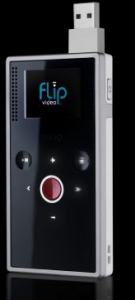
While watching Objectified on Thursday night my mind started moving like gears of a clock. I took away lots of great ideas and revelations about design. I kept thinking “Okay, remember THIS for after the movie.” and “Make sure to put THAT into Evernote.”
I think it’s funny how I have to actively tell myself to make mental notes on things, I spent a lot of my childhood not being inquisitive because I would just accept things the way they are instead of asking millions of questions like other kids. This is probably why I failed so hard at making notes in margins of passages in scholastic tests and in core reading books. I was always like “Who cares? Move on with the story. All will be explained later… probably.” (Maybe it was an exercise in patience. No, that’s can’t be it, as an adult I have no patience whatsoever.)
Initially, I was asking questions like “What about design they going to cover in this film?” and “How are they going to cover everything about product design?” The latter question then spurred the thought that there should probably be a film made about every single object that’s ever been made! (If not “should” then at least probably “could”.)
Take cars for example, there was a brief part of the film that covered car design one designer said that the front end of cars all have a “face”. So I started thinking about the design of other features of the car. They could make a whole documentary about car design, though there may be a limited audience for that, or maybe not, cars are still a pretty popular object.
Another topic that they touched on was the design of digital cameras. Old film cameras are the shape they are because of the shape of the film and what needed to happen inside the camera. So, why then do digital ones still follow the same basic shape if they no longer have need to house film? Do most camera makers fear that users will reject any new shapes of cameras and prefer the rectangular shape because of its familiarity? Or is it simply because that is the best design for its functionality? As a rectangle it fits between both hands for a steadier picture without a tripod. Is it because of the need to have space for the display screen and lens?

Then take a look at the Flip, it’s a camera but takes a more cell phone like shape. I think this change in shape is helpful in situations like trying to film over the crowd at band on stage at a show, but then why doesn’t the screen pivot giving the user access to the display while holding the camera so high up? They seem to have taken distribution of weight into consideration for better handling while filming one handed but haven’t considered everything. Or maybe they have and there is reasoning for it.
A major idea from the movie that I really liked and I suppose only thought about on a passing instances before came from Bill Moggridge (IDEO). He said he liked the idea of objects being “worn in as opposed to being worn out” and how we grow strong emotional relationships with certain objects in our lives the longer we have them. I suppose everyone has thought about this at some point in their lives. Rob Walker (New York Times) gave the scenario of a hurricane coming and you only have a few minutes to run inside your house and grab a few things. You’re not going to think about what got a great write up in last month’s design blogs, you’re going to grab the items that have sentimental value, the objects that you value on an emotional level. (You’ve have to excuse the paraphrasing. I couldn’t get a word for word quote down since typing something out on a cell phone in a darkened theater is a faux-pas, apparently. Who knew?)
Thinking about my own items of personal value, I realized that the things I love most aren’t ones that I would have thought I’d have the strongest emotional ties to when I bought or obtained them. This is especially true about pieces of clothing that I own, of which are most likely the most “designed” things I buy. There are some pieces that I buy thinking “I LOVE this” but never really wear because they either don’t fit right or aren’t practical for every day use. Then there are items with I might have thought “hey, this is kinda cool” but wear all the time because I love the way they feel and they fit so easily into my life. Then of course I took that idea and drew a parallel to personal relationships I have/had, same ideas apply there.
Going back to the part about cars, Walker was saying that when buying cars, one thinks about what the car will say about them, as a person. And it doesn’t stop once you buy the car and are in the car, because then you start thinking about what stickers to put on the car, what to put inside the car. At that point you have to consider the audience to which you are speaking to with all these car accessories. And in the end, the audience is you, you’re doing all that stuff for you because at 50 mph on the highway, nobody really gives a crap.
Anyway, in the end, I liked the film, quite a bit, it was inspiring. At the same time though, I wanted more. I feel like this was and introductory guide to design and the idea that everything that has ever been made was once designed.
